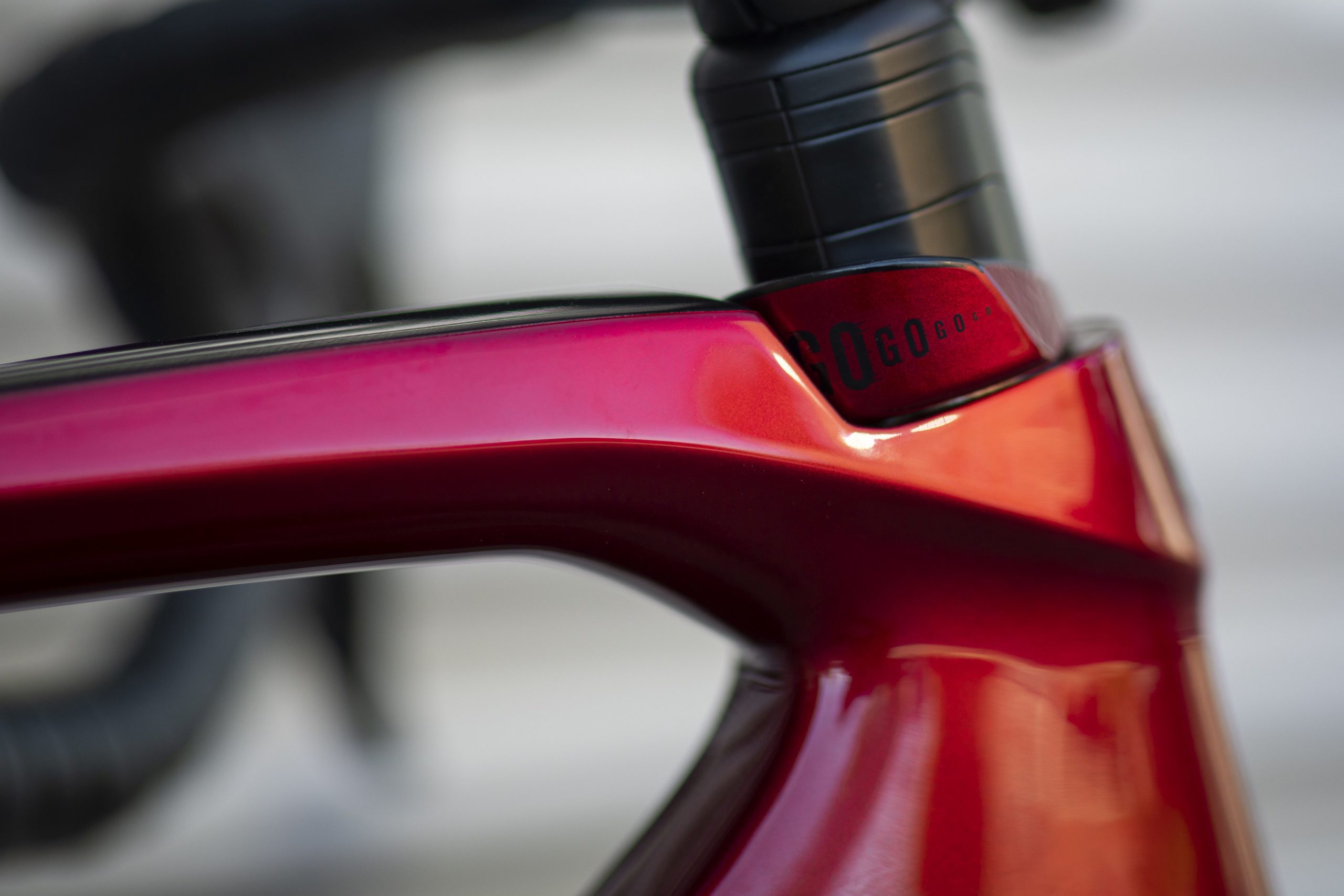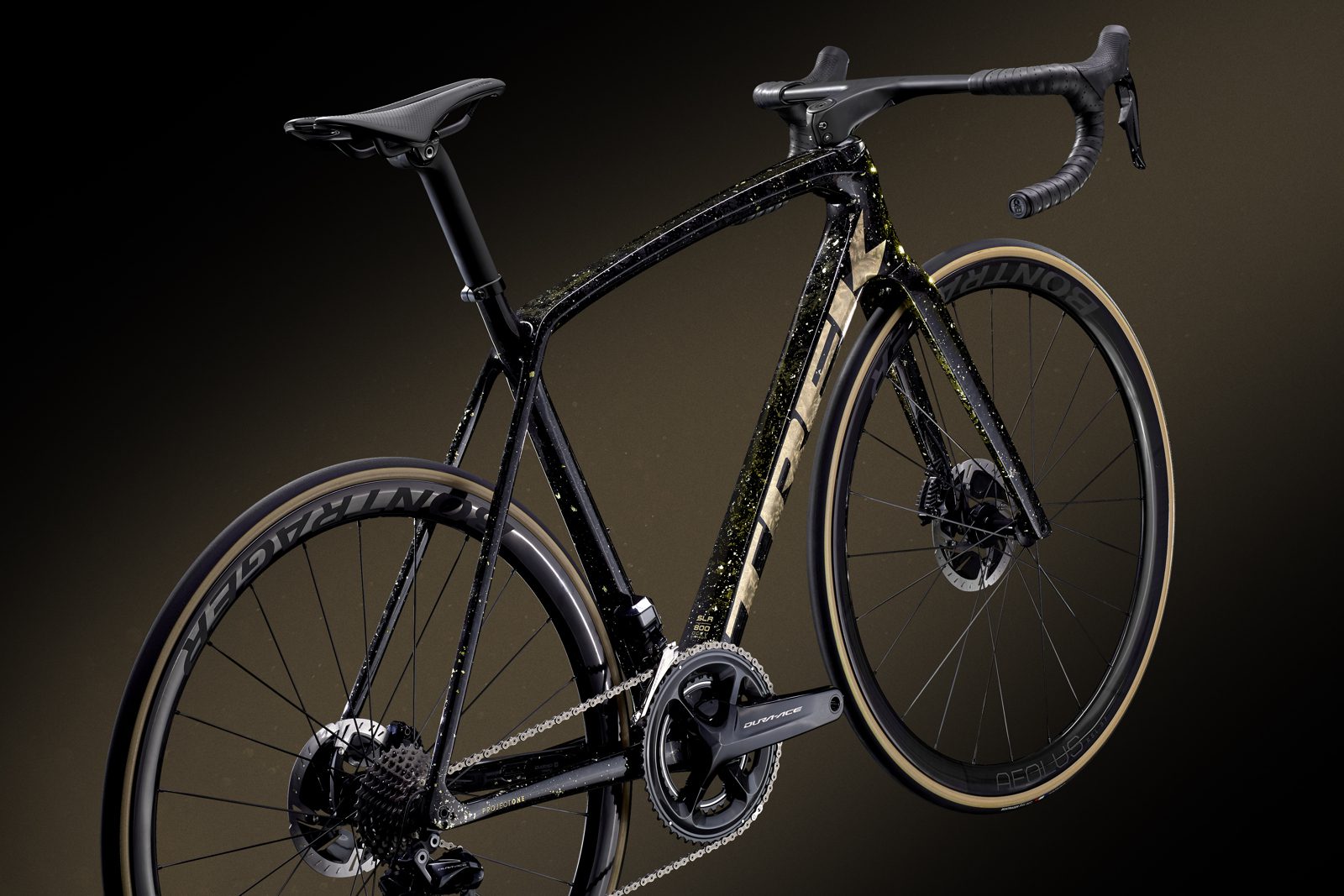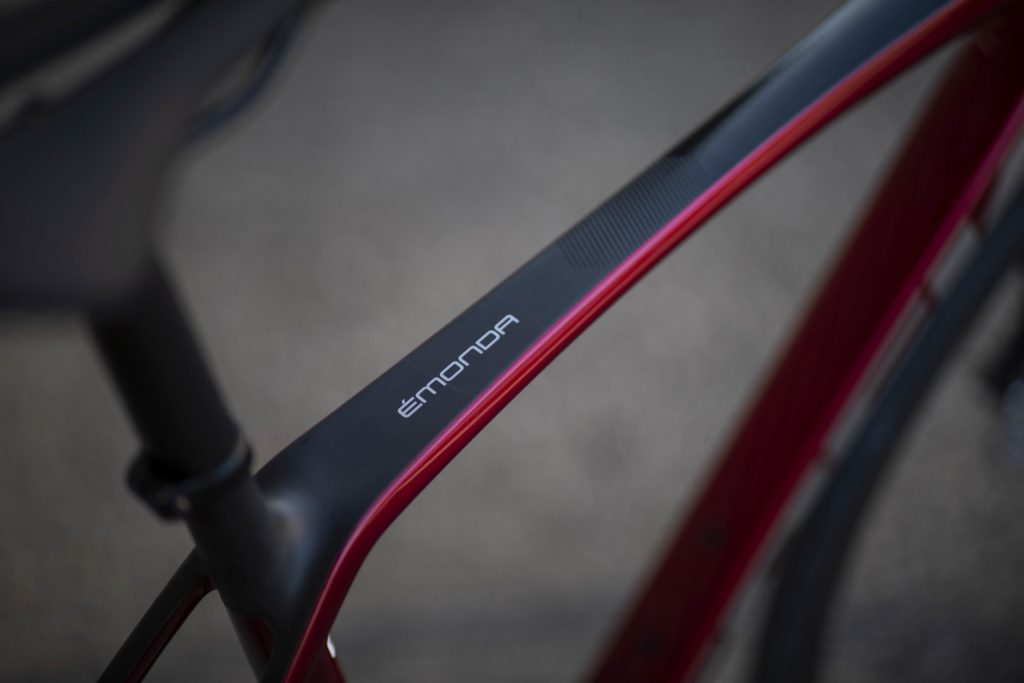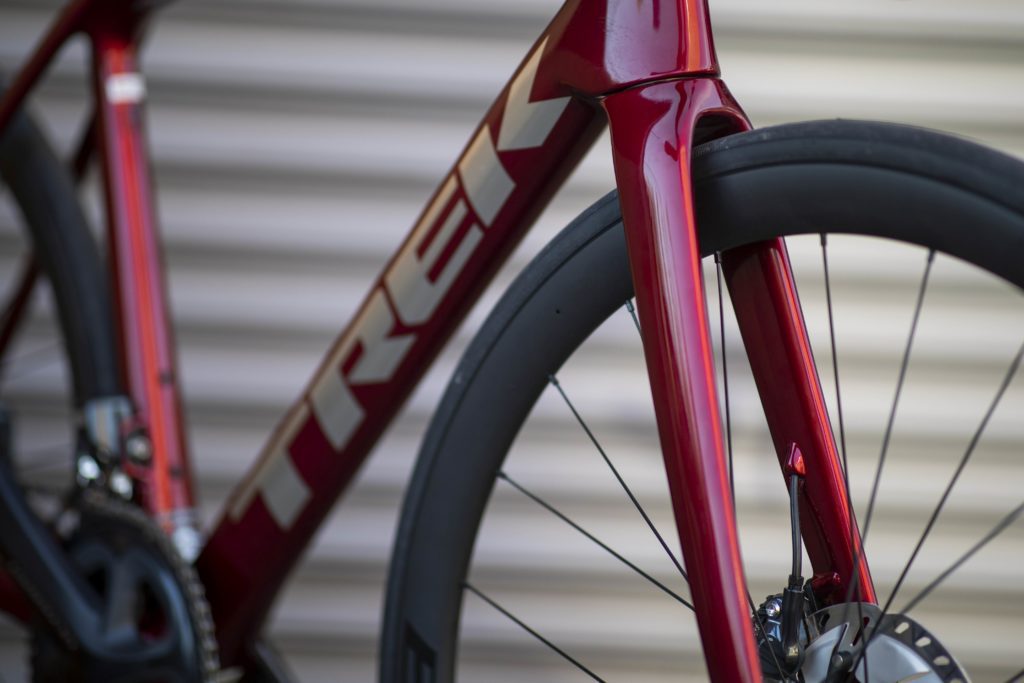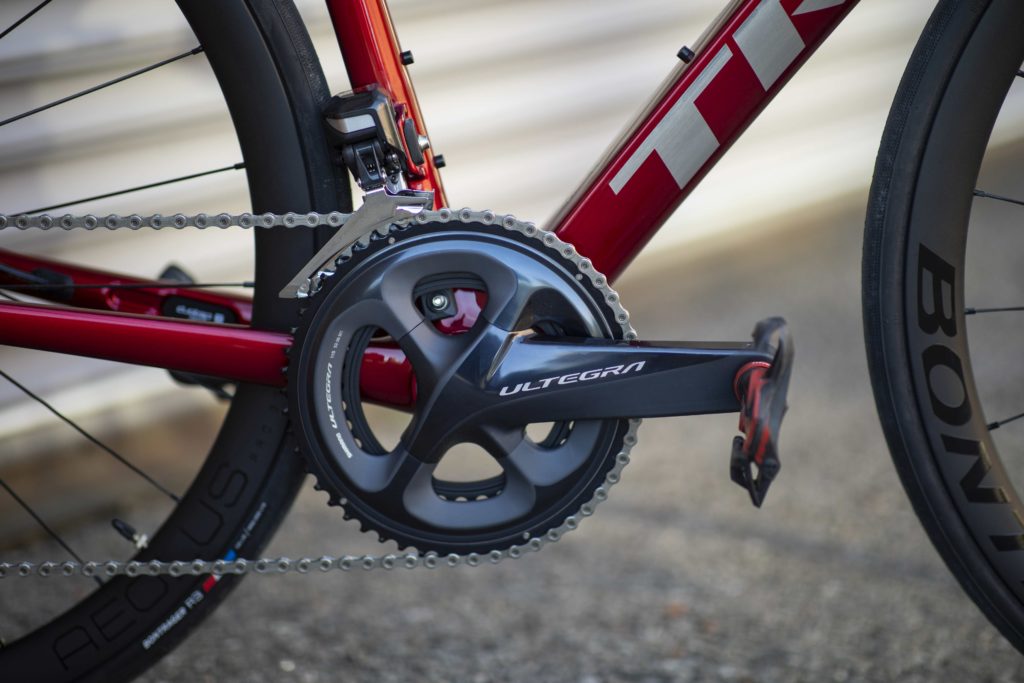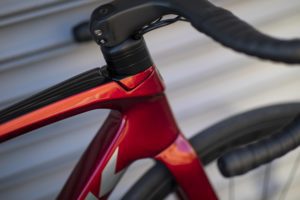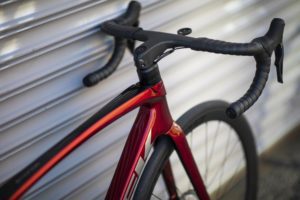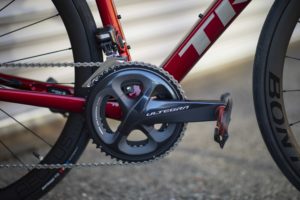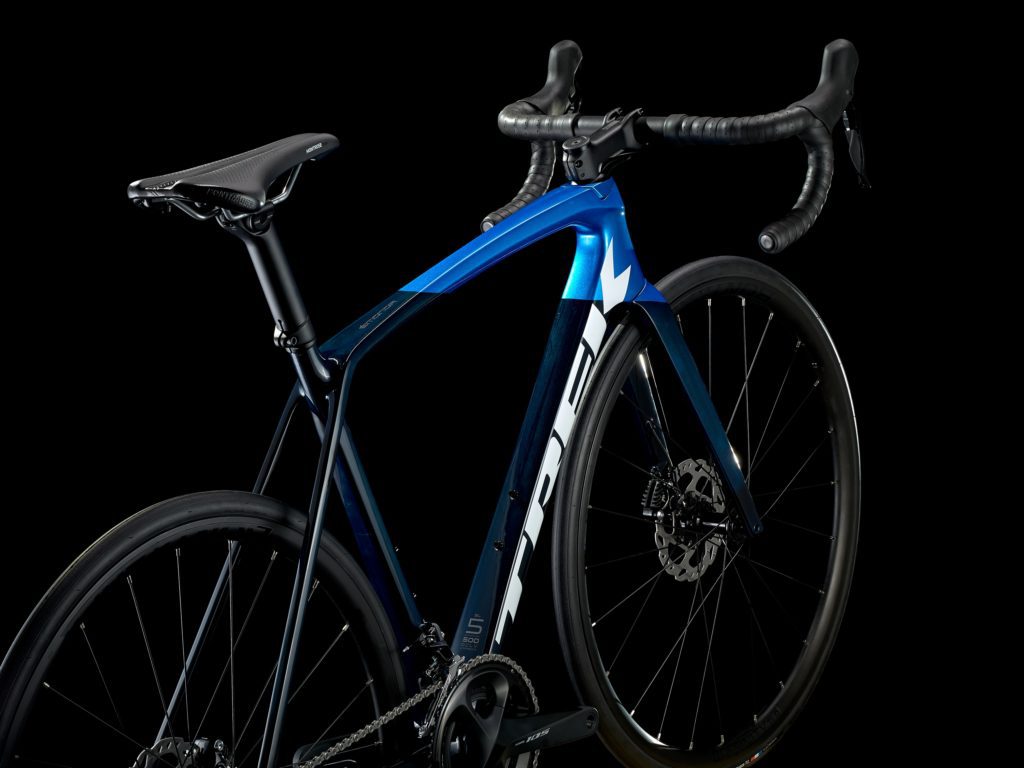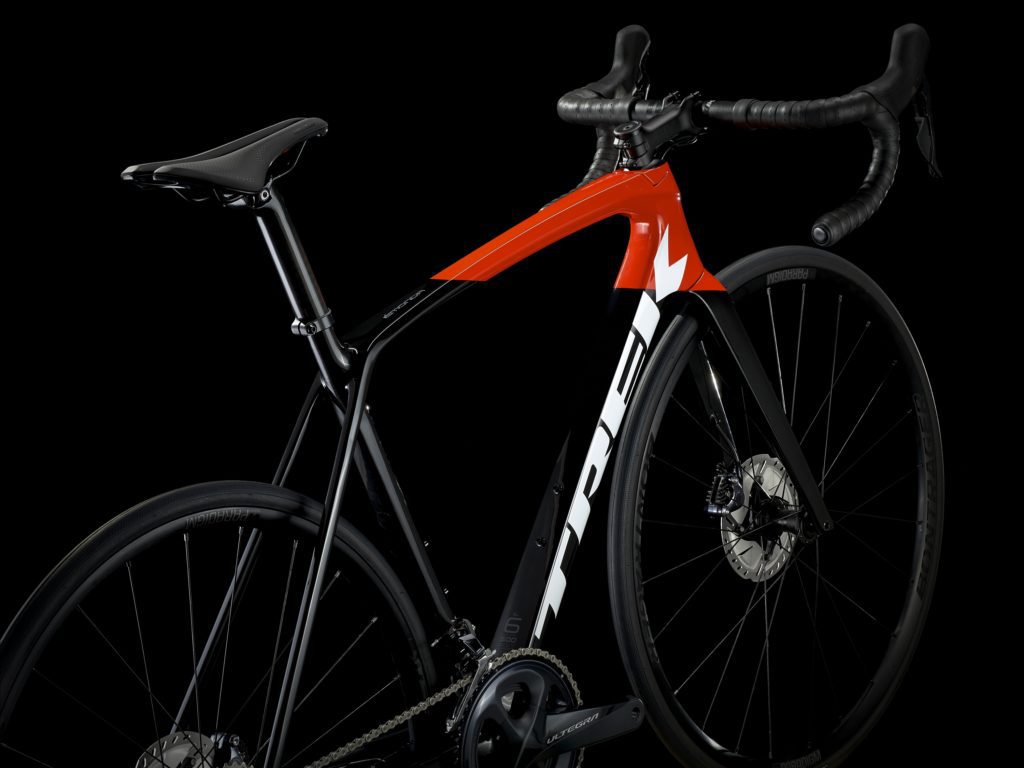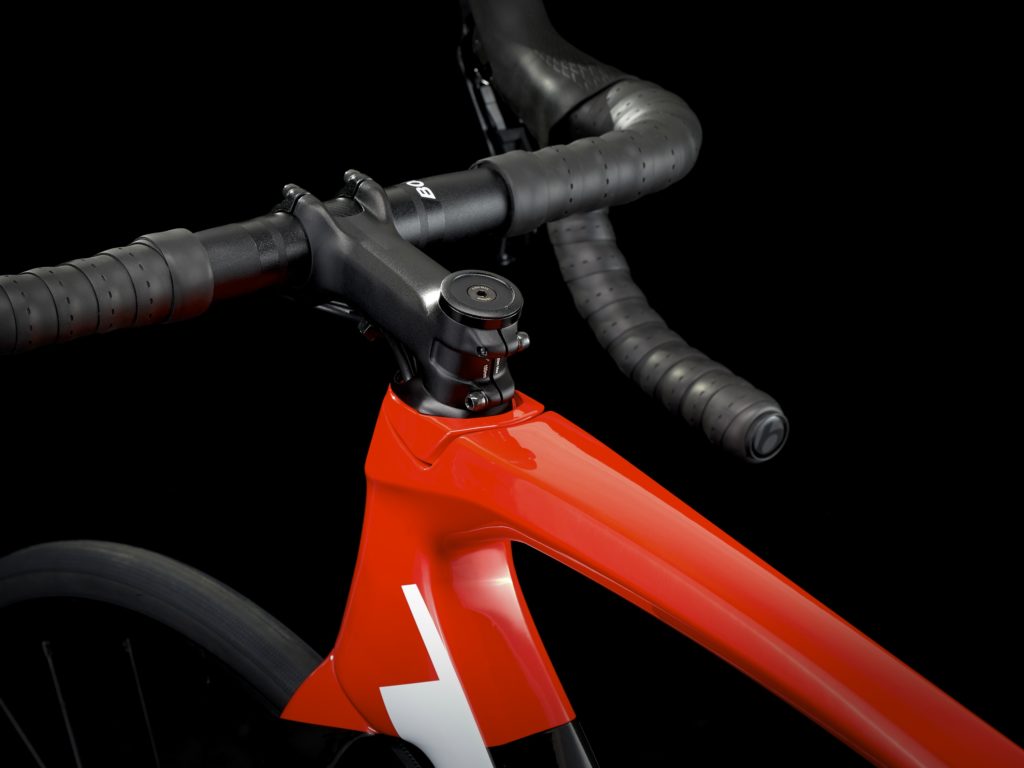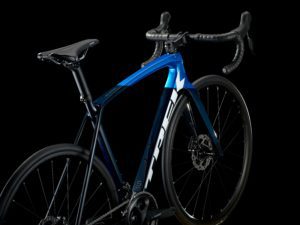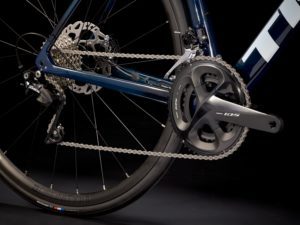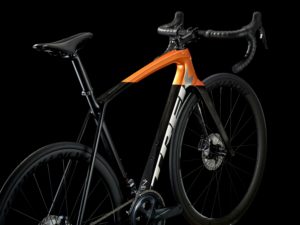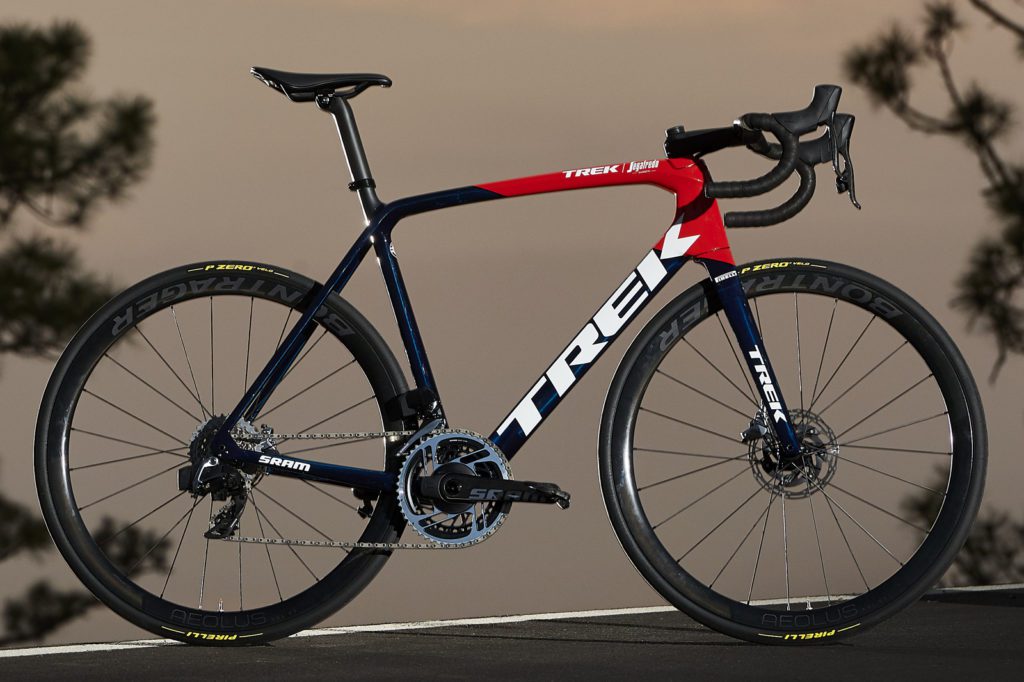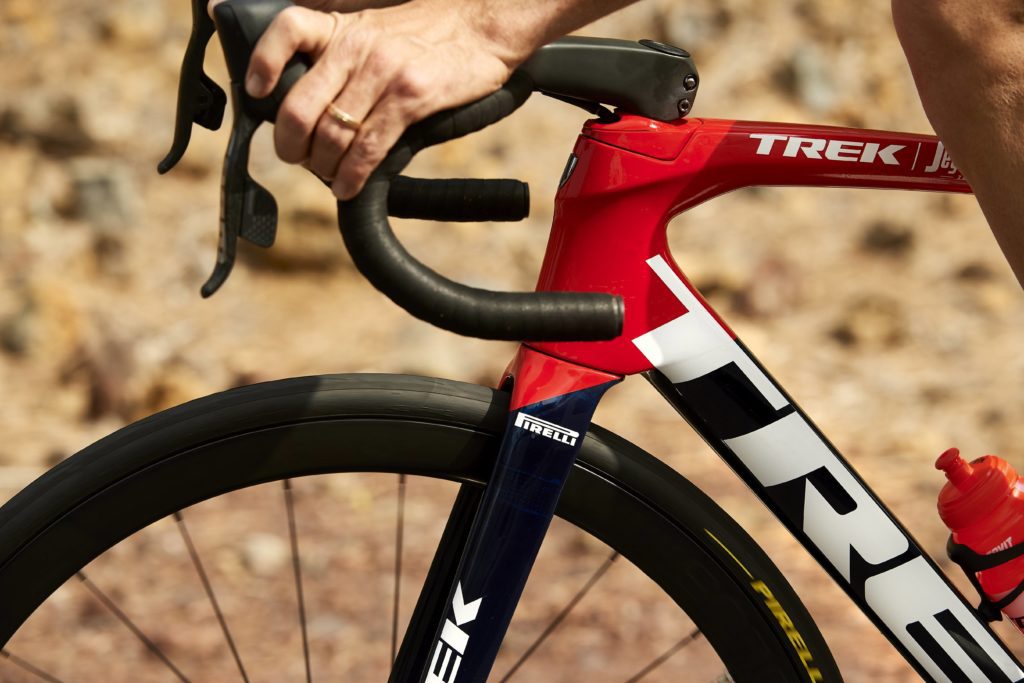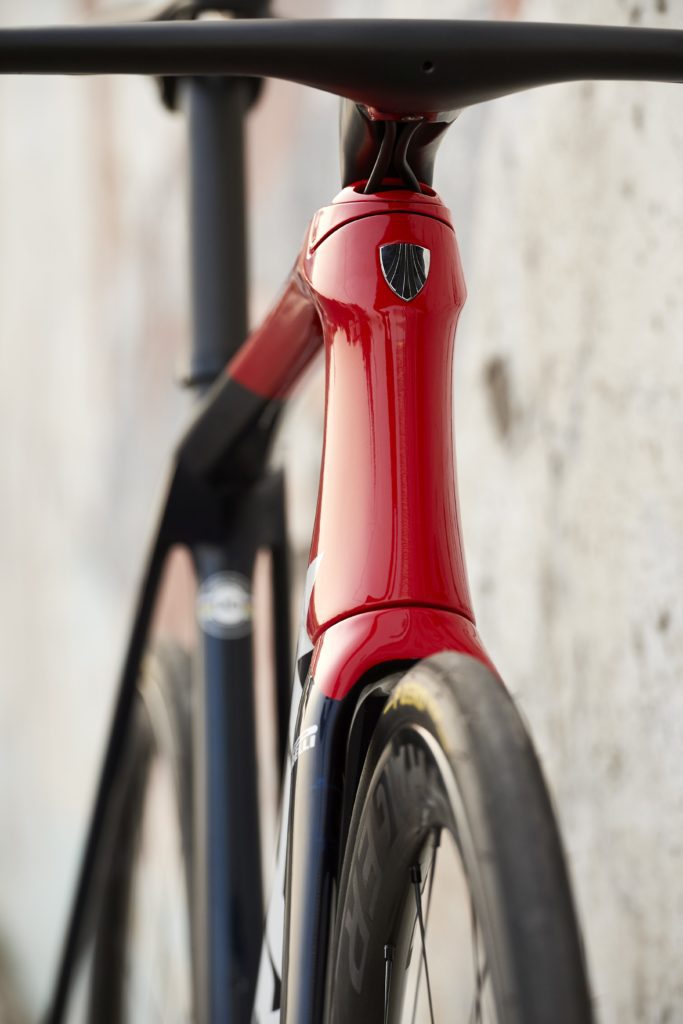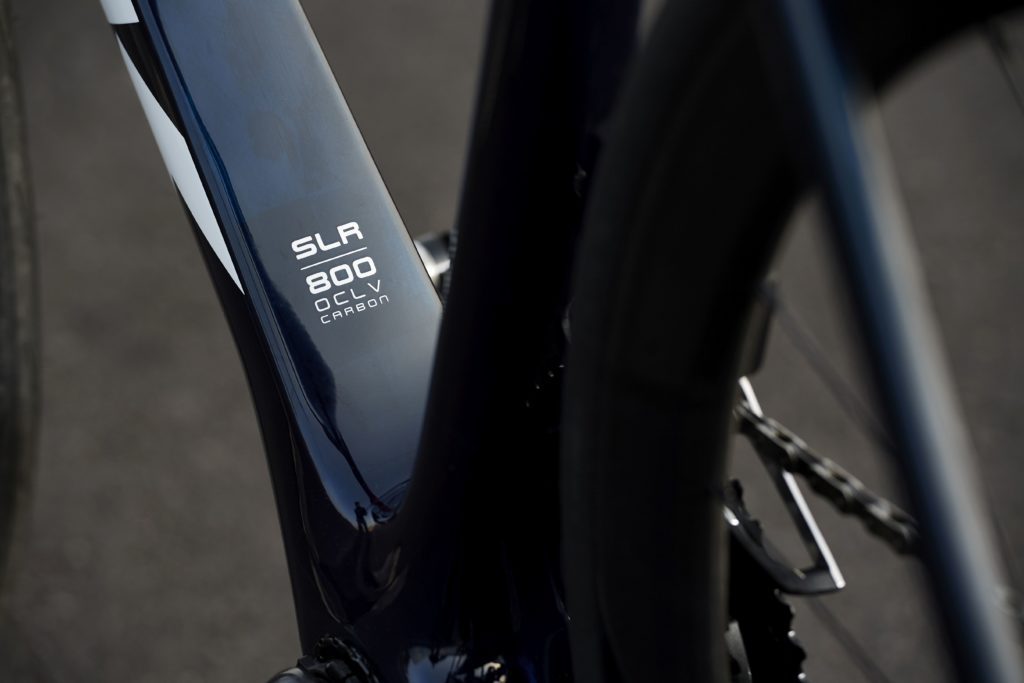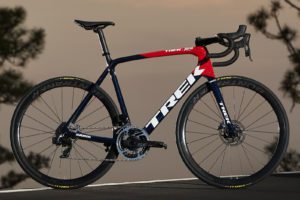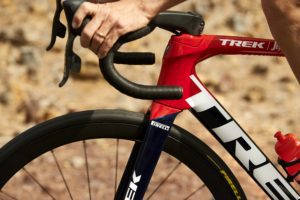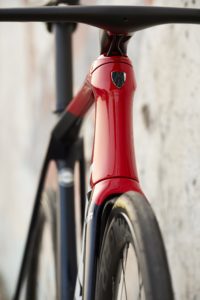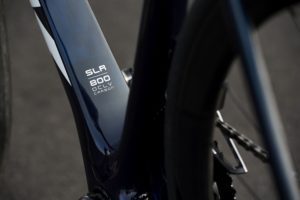The new 2021 Trek Émonda mixes climbing prowess with better aerodynamics
What happens to a lightweight performance bike when a company reduces its drag?
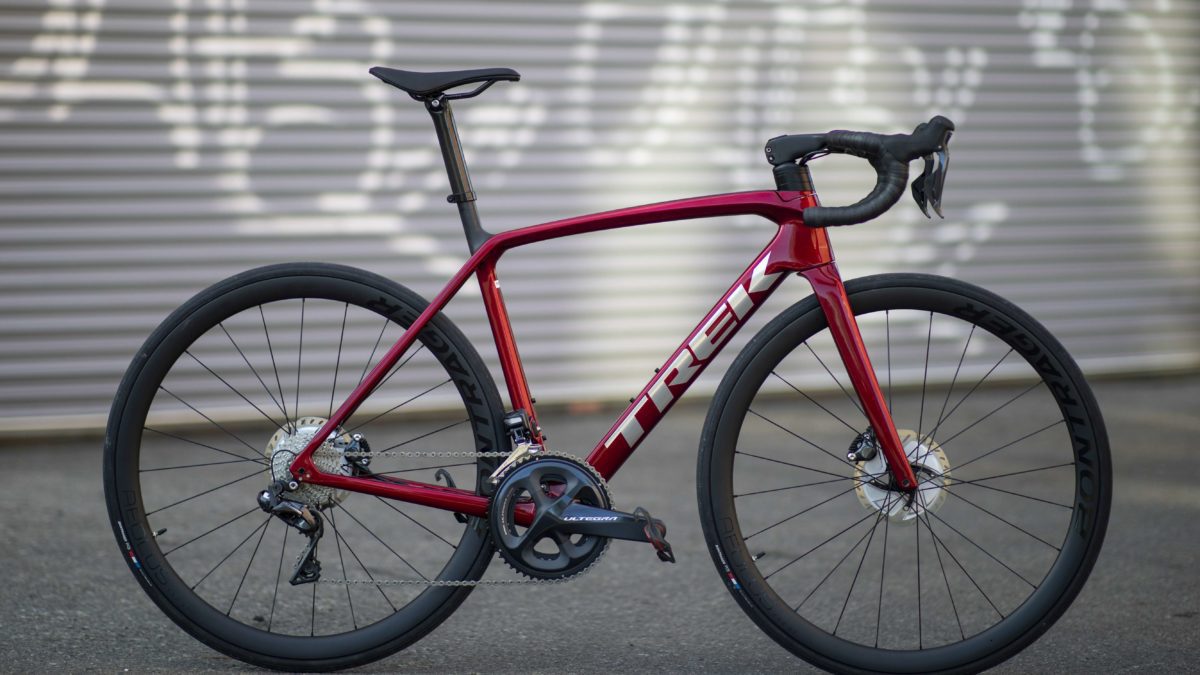 Photo by:
Nick Iwanyshyn
Photo by:
Nick Iwanyshyn
The new 2021 Trek Émonda has been released by the Waterloo, Wis.-based company. The frame, which has been Trek’s lightweight climber’s bike since 2014, is now more aerodynamic than its predecessors. Adding wind-cheating gains to a bike that is not primarily an aero machine is something Trek has done before. In 2019, when the endurance-oriented Domane was updated, it fared better in the wind. Usually, aerodynamic tube shapes add weight to a bike. In the case of the Émonda, I wondered how Trek could keep the frame true to its climbing roots. Could it really fight gravity and wind?
The top-end model of Trek’s 2014 Émonda weighed in at a little more than 10 lb. or 4.6 kg. The second-generation, launched in 2017, featured disc brakes, while the frame continued to weigh less than 700 g. Still, members of the Trek-Segafredo team wanted more out of the Émonda. “There was just a big gap between the Émonda and the Madone,” says Matt Shriver, technical director of the pro road teams, comparing the lightweight bike with Trek’s aero road bike. “But the team was pushing for a new Émonda that didn’t lose the ride characteristics, the geometry and its snappy feeling.” And it had to be more aero.
One of the designers at Trek who participated in the balancing act of reducing drag while also keeping the weight down is aerodynamicist John Davis. He and his team looked at making the bike faster up the iconic Tour de France climb, Alpe d’Huez, through a simulation. “We know if we reduce the weight, we’ll be faster up Alpe d’Huez,” he says. “But that’s not necessarily the most efficient way to get there. Before we did any engineering at all on the bike, we decided to create a road map. What’s the most efficient way to be faster up Alpe d’Huez? The way to do that was to take the current bike and calculate the time up the climb. Then, what happens if we add 500 g of weight to the bike in order to reduce the drag by 100 g? We did that tradeoff for every single point: plus or minus 1 kg of weight and plus or minus 30 per cent in aero. What we got on our road map was a set of contours similar to elevation contours on a map. If you want the fastest way up a mountain, you go where the contours are closest together. We did the same thing with our road map, where the contours are the time up Alpe d’Huez. We checked where we started, then we saw if we reduced about three times the drag for every unit of weight. That’s the fastest way to go faster up the climb.”
Davis employed a lot of computing power not only to run his aerodynamics work, but also to connect with members of the structures team. He would see what effects his changes would have on weight and other design implications.
A climber’s bike—which generally has rounder, shallower tubes than an aero machine to keep weight down—usually goes up an incline at slower speeds and faces gustier winds, often moving at similar rates to the bike itself. These three elements—tube shapes. slower speeds and gusty conditions—create what Davis calls unsteady aerodynamics. It’s a lot harder to manage unsteady aerodynamics compared with the steadier variables that surround a time trial bike cruising in a straight line on a flat course. Still, the tricky aero conditions are what David and his team addressed with the new Émonda’s tube shapes. For example, the head tube is wider and stiffer than that on the previous Emonda. And even though it’s bigger, it’s lighter and more aerodynamic. The down tube has subtle shape changes across its length. At the top of the down tube, it addresses airflow off the wheel rim and tire. Then there’s shaping to smooth the air around the bottle and cage. Trek says this bike saves you 182 g of drag, or about 1.8 N.
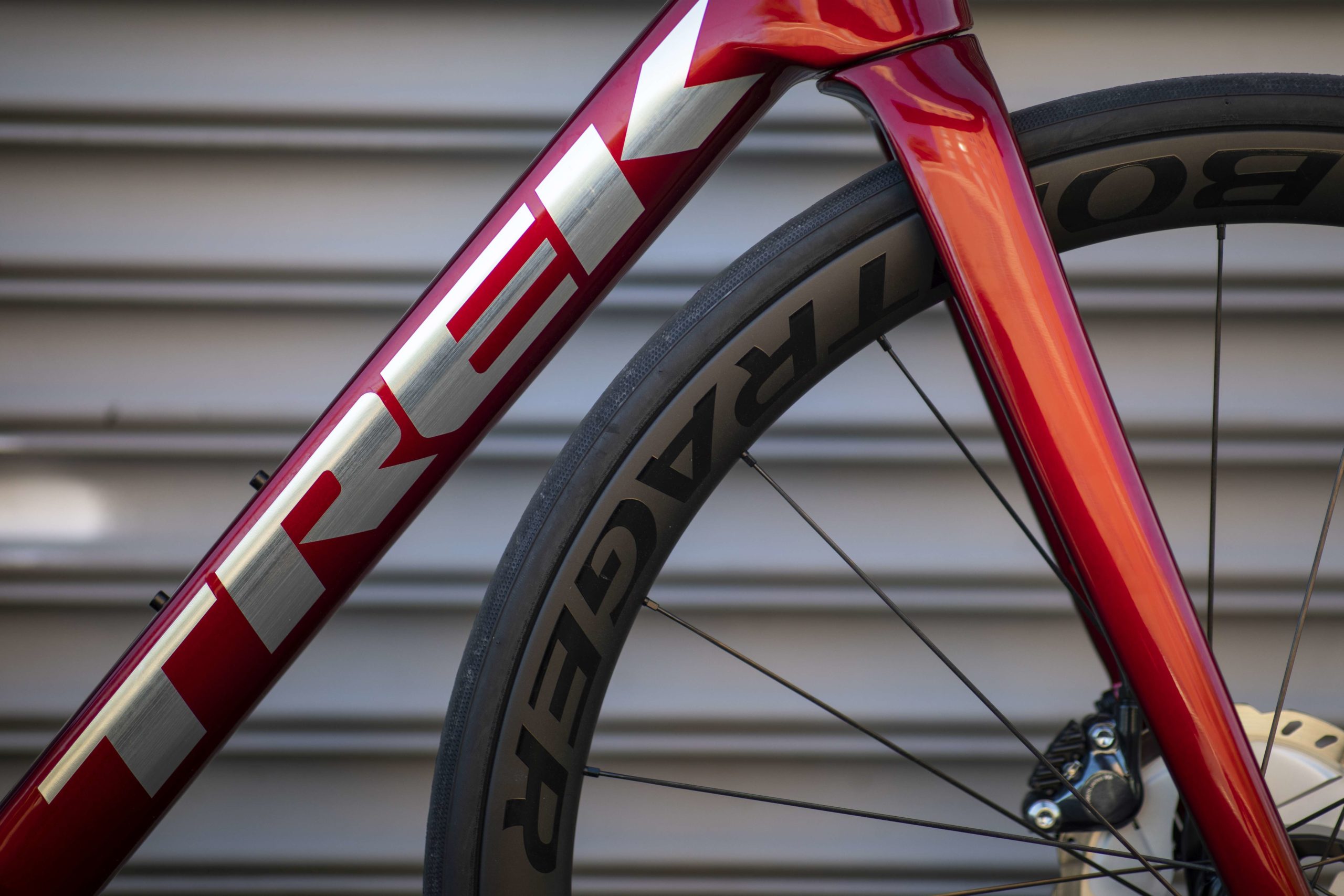
Trek could have made more aero gains with dropped chainstays, but of course, that would have added more weight. That kind of change fell outside of the road map Davis mentioned. It seems dropped stays would have taken the frame just a bit too far away from its main purpose.
As with the first two generations of Émondas, the new frame weighs less than 700 g. Trek says a size 56 of the top-end SLR frame comes in at 698 g. One way the company kept the weight down while getting more aero is with the new carbon-fibre recipe used within the frame. It features the new optimum-compaction, low-void (OCLV) 800 series. Compared with OCLV 700, the latest composite is 30 per cent stronger. The 800 gave designers 60 g of savings, too.
The top-end SLR frames are made with the 800 series carbon fibre. The SL models use OCLV 500. At the top you have the Émonda SLR 9 eTap ($16,500) and SLR 9 ($16,500), which run SRAM’s top gruppo and Shimano Dura-Ace Di2 respectively. Both come in at just a little less than the UCI weight minimum, 6.75 kg and 6.78 kg. (Don’t worry. Once full bidon will tip the scale into race-legal territory.) The SLR 7 models go to the second-tier groupsets by each component maker, Force ($11,300) and Ultegra ($10,000). Those groups appear again in the SL 7 and 6 models of Émonda ($8,150–$4,200). There’s also the Shimano 105 Émonda SL 5 ($3,500), which weighs a respectable 9.16 kg.
The new one-piece Aeolus RSL handlebar-and-stem combo ($870) also continues the theme of lighter and more aero. Trek says it’s 10 per faster than the previous setup on the Émonda. The bike’s brake lines and cables run into the head tube, just beneath the stem. The setup means you can change the bars and stem without having to re-hose or re-cable the system. You can also run more traditional bar/stem parts on the Émonda, should you wish. The Aeolus RSL is optimized for Shimano’s electronic Di2 groups (you’ll find the junction box in the bar end) and hydraulic disc brakes, but is compatible with mechanical systems, too. Don’t go looking for a rim-brake model of the Émonda. All new models run rotors. Trek says its sales have favoured disc-brake models so heavily that it will simply forgo making a new rim-brake Émonda.
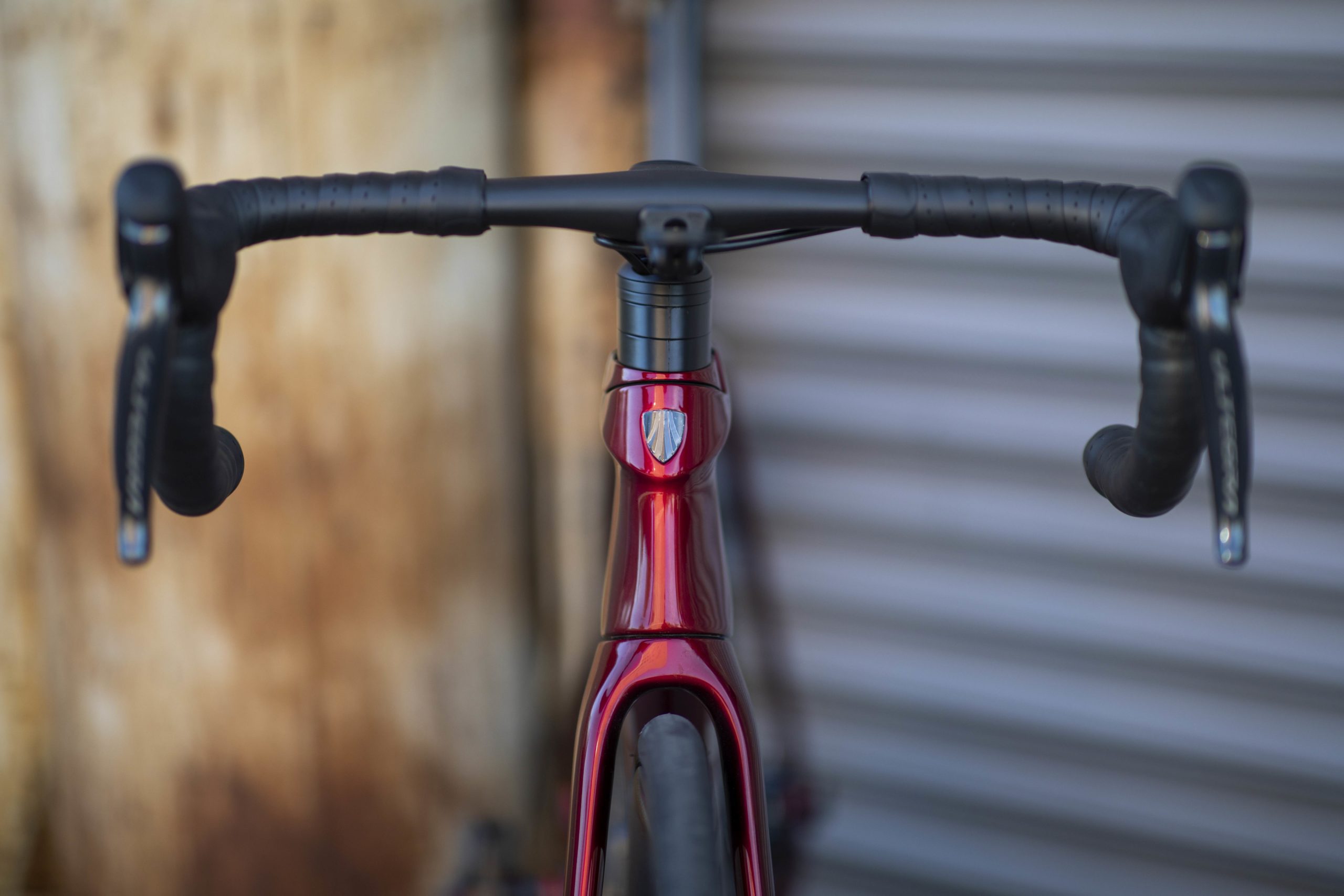
In 2019, Trek’s Crockett cyclocross rig was outfitted with a T47 bottom bracket. Later that year, the new Domane had the same BB. The latest Émonda continues the trend. Two threaded cups twist into a metal sleeve bonded inside the carbon fibre. This system is in contrast to the press-fit BB90 on the Madone, which can be prone to creaking. The T47 allows Trek’s designers to continue to build frames with a wide stance at the bottom, for better stiffness and ride feel, while keeping creaks out of the cranks.
The Émonda comes in the company’s H 1.5 fit. It’s a less aggressive geometry than the older H 1 fit, but still works for the pros. (It already features on the Madone.) Trek says the Émonda is a bike that works for both genders. Riders can choose different cranks, seatmasts and, of course, bars and stems, to achieve the right fit.
The new bike comes with a new set of wheels. The top-of-the-line Émonda SLR 9 features the Aeolus RSL 37 hoops ($3,199, wheelset). They weigh 1,325 g. They’re lighter than the Aeolus XXX 2, deeper at 37 mm and 17 per cent faster, says Trek. In fact, the company says the aero performance of the RSL 37 approaches that of the 47-mm-deep Aeolus XXX 4. On the Émonda SLR 7, there’s the Aeolus Pro 37 wheels ($1,600, wheelset). They have the same aerodynamic features of the RSL 37, but weigh in at 1,505 g. Lastly, the third-tier Aeolus Elite wheels come in rim depths of 35 and 50 mm ($1,200, each wheelset). The wheels and the Émonda frames are optimized for 25c tires, but can accommodate 28c treads.

With the 2021 Émonda, Trek achieved its goal of making its climbing bike more aero. It was a similar story for the 2020 Domane, the endurance bike that now rides better in the wind. With features from one performance road bike moving to the other – remember, the aero Madone has an IsoSpeed decoupler which used to be only the domain of the Domane – I wondered if the singular purpose of each bike might get blunted. Jordan Roessingh, Trek’s director of road bikes, doesn’t think so. In fact, he says they start their projects by considering the bike’s main function.
“We default back to the rider and our understanding of who our riders are,” Roessingh says “They have different motivations and are doing different things with their bikes. Then we have a rider and a ride that we’re targeting for a specific platform. That’s the foundation of how we design all of our platforms and segment them, from gravel, to endurance road, aero road or climbing/traditional road. The rider we start with for the Émonda is motivated by weight, someone who is in hillier terrain, or rides climbs, and looks to beat personal records up climbs. There’s a racier motivation overall, including with the fit. We always start with the rider.”
Trek Émonda SLR 7 first impressions
I’ve had the Trek Émonda SLR 7 for about a week. I was impressed during my first rides. The bike is responsive, but I can say the same about all super bikes. The Émonda does have a certain snap, though. You almost feel you get more out of a pedal stroke than you’d expect, whether that’s on a climb or hammering out of the saddle. I remember that from the first-generation bike I tested in 2014. (Somehow, I then skipped a generation.) It seems Trek’s designers really did keep the bike’s ride feel, just as the pros wanted. The Émonda corners smoothly, as the wheels carry the speed into the bend and the geometry guides it throughout. I’m looking forward to getting more miles on the machine.
